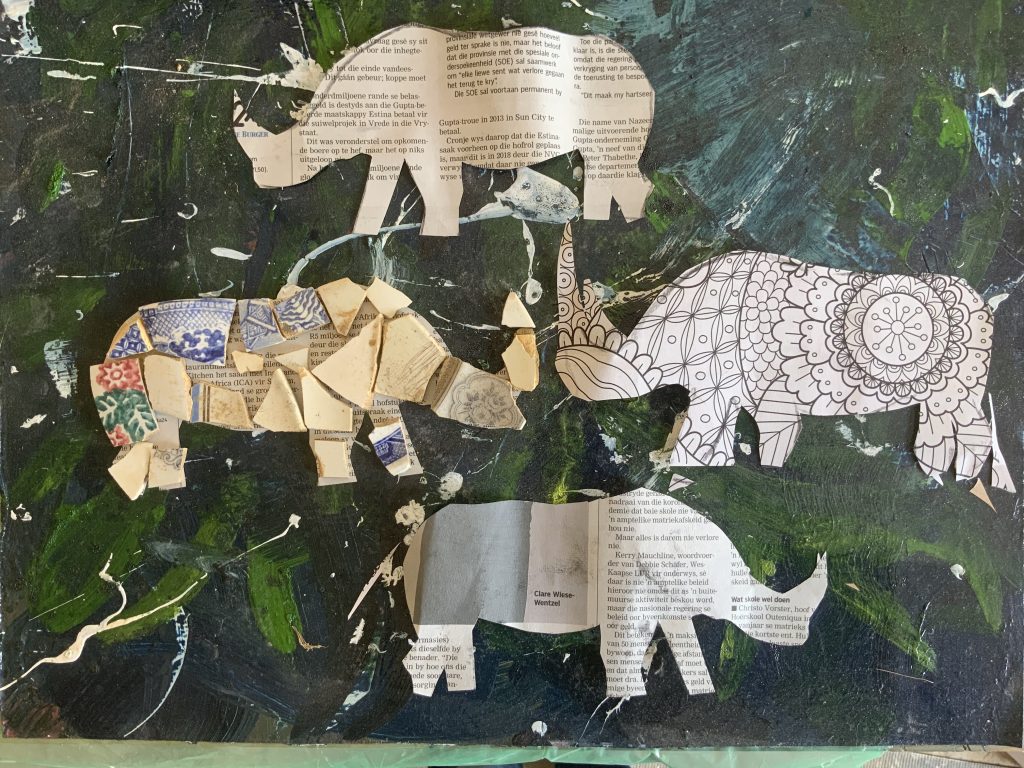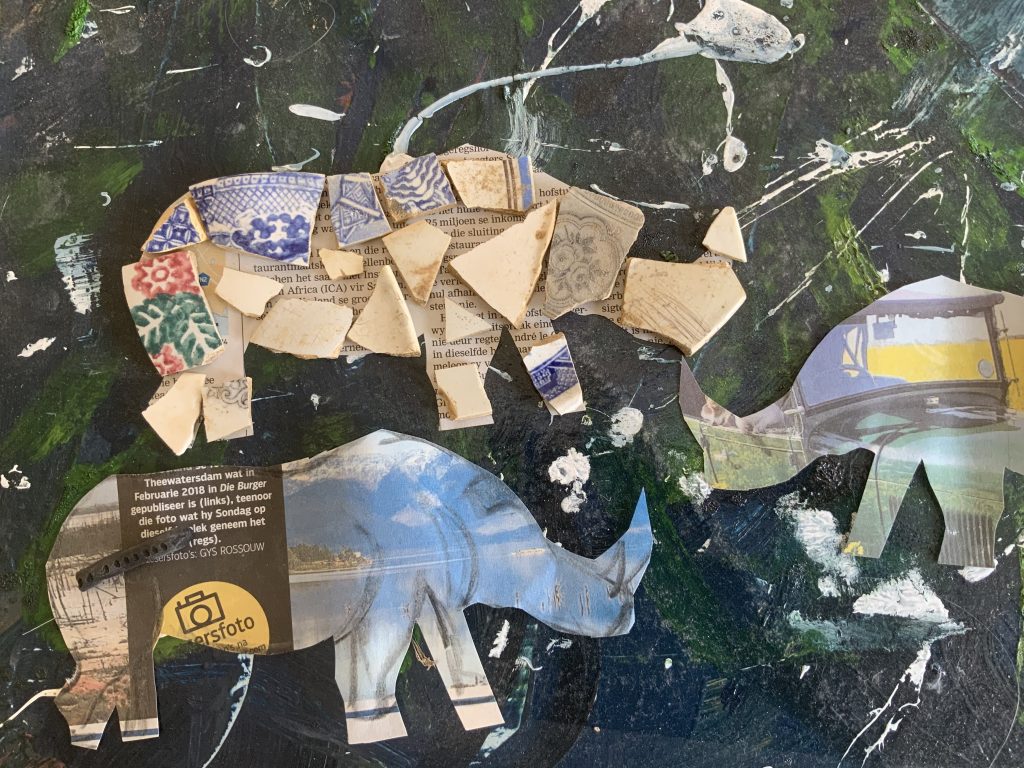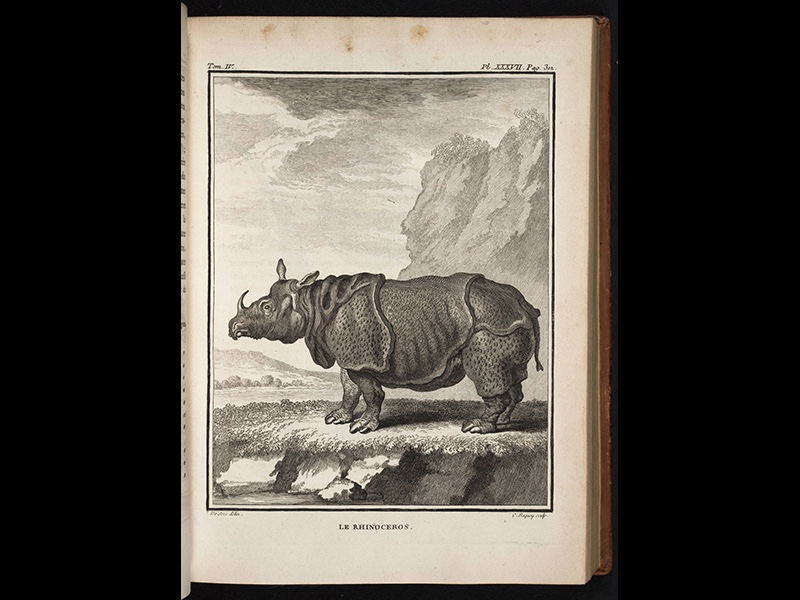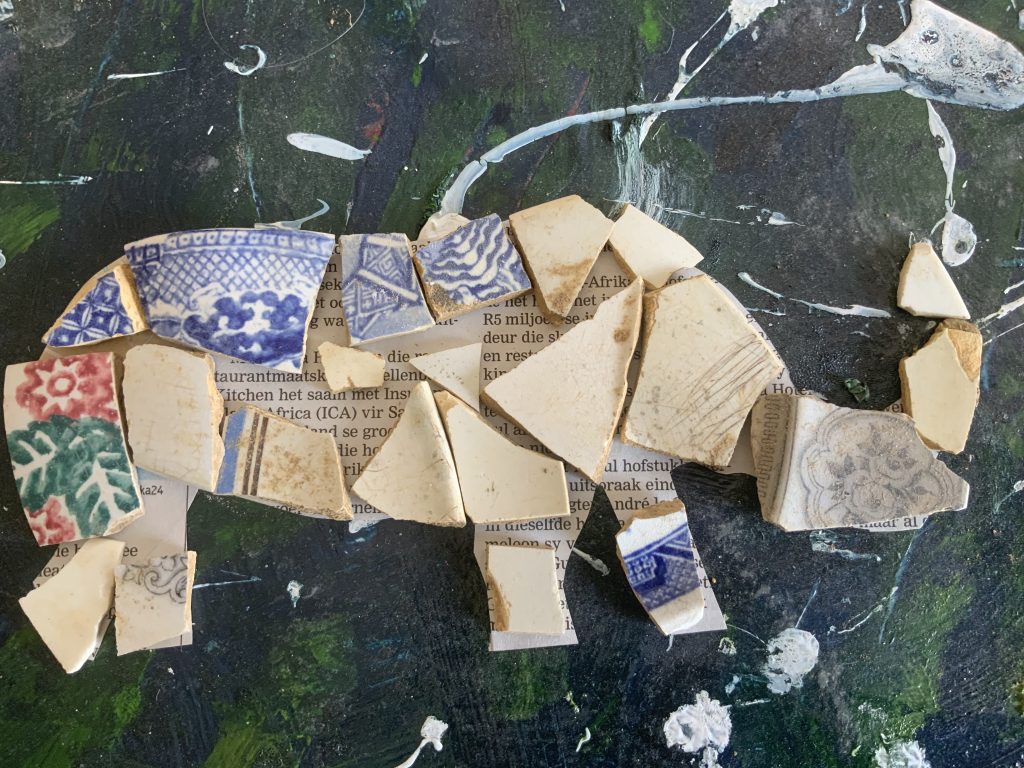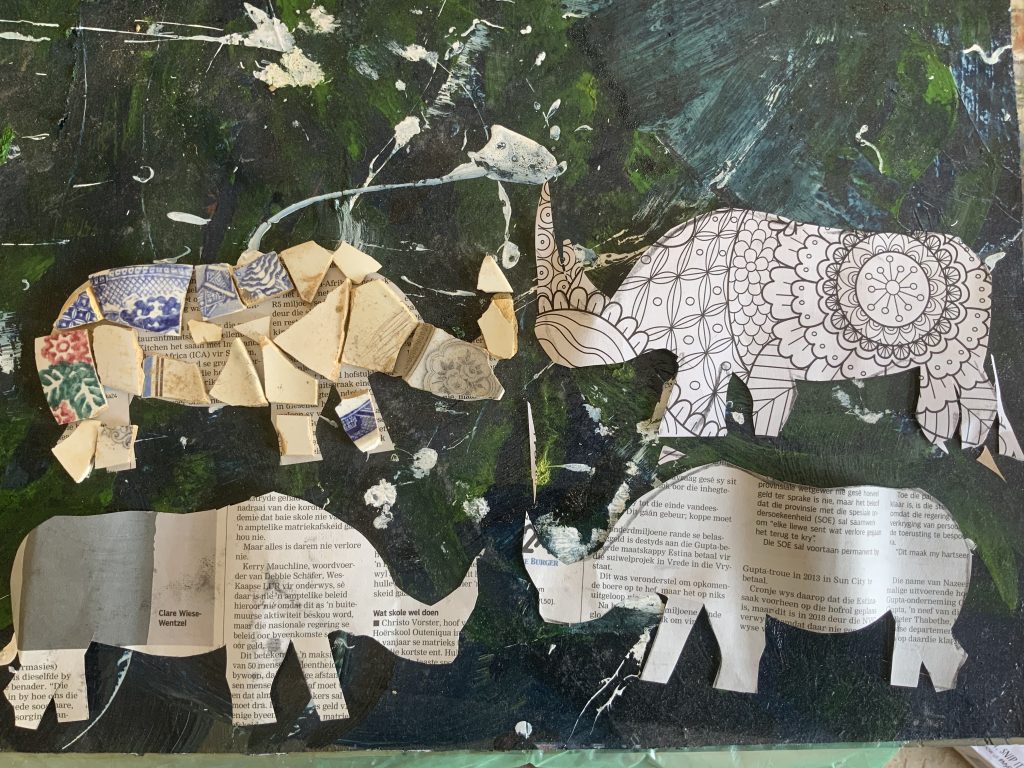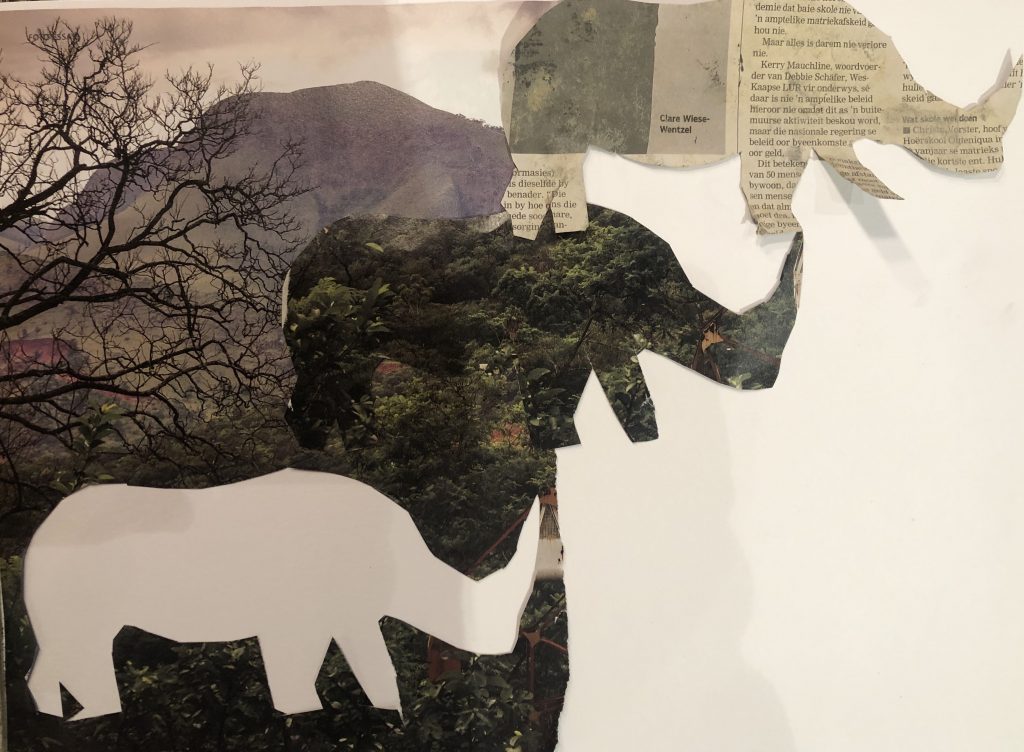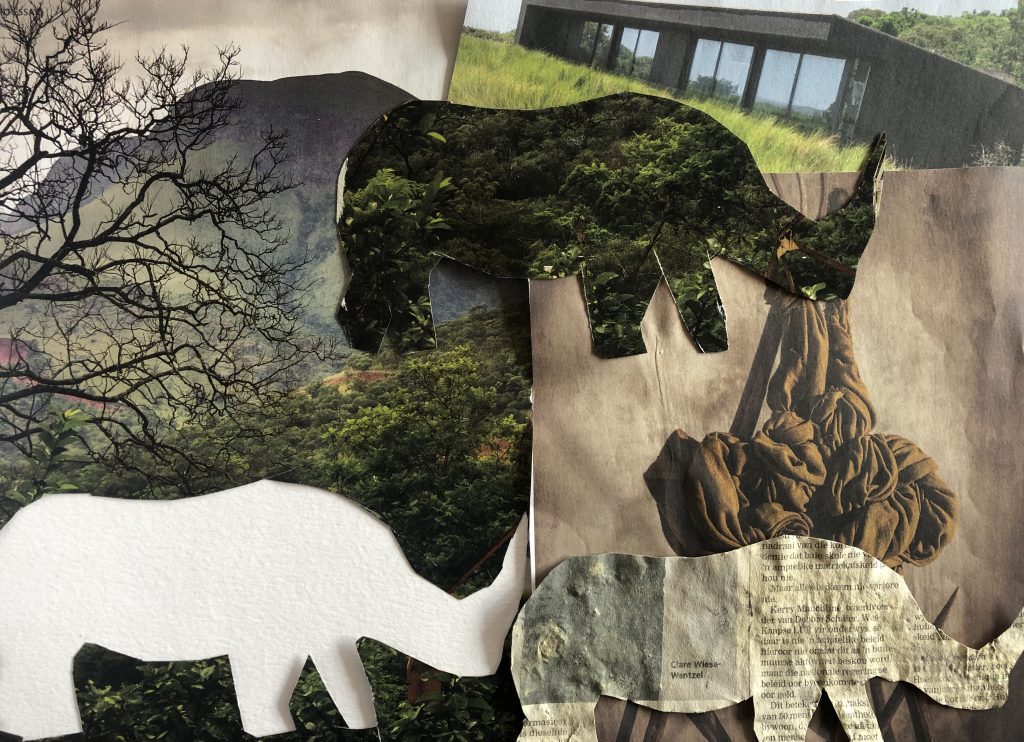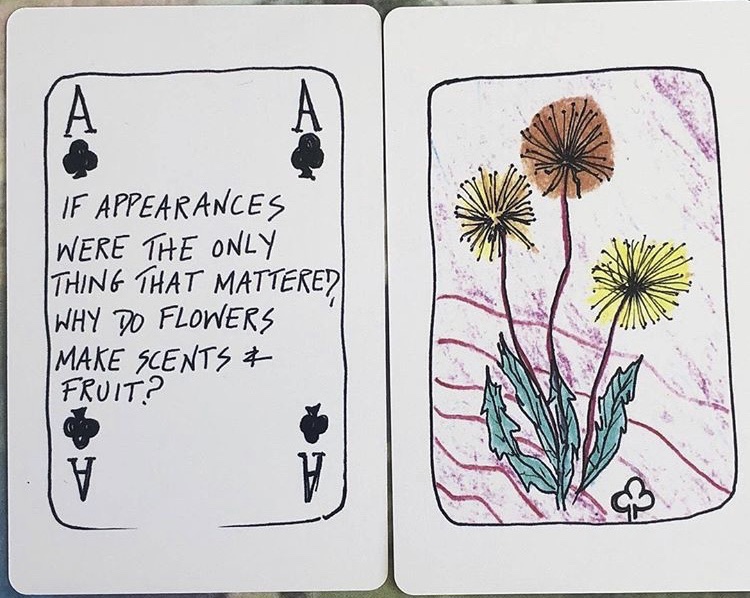
TOPIC ONE The artwork and the audience
Reading point 1
Sontag, S. (1994) ‘Against Interpretation’
I added my research and reading notes for this exercise in my blog, Reading List , under Part Two. I would however like to put forward the following opinion which I read: “ …..Sontag proposed the transcendental power of art which was often taken for granted by the critics prone on constructing their intellectual readings. Moreover, she underlined that the modern style of interpretation lost sensitivity due to intent to excavate or destroy a piece of art.” (widewalls). According to Sontag “interpretation makes art manageable, comfortable”; and by “reducing the work of art to its content and then interpreting that, one tames the work of art.” She suggest that we should pay more attention to “form in art” (to the experience of a seeing a work of art), and to “experiencing the luminousness of the thing in itself”. Our task is not to find the maximum amount of content in a work of art… Our task is to cut back content ( rules of out thinking, theory?) so that we (only the critic, or does she include the audience, art lover) can interact with creativity, that which is art and indicates to the artist as a creative.

In order to consider the viewer who want to connect with an artwork, I can put myself in this position. Many a time I am aware of a feeling of disconnect with the art world and contemporary artworks (including installations, performance, etc) in exhibitions : example, when people talk or write about an exhibition or particular artwork, and then I realise my experience/assessment/opinion is so very different to the other. It could also be that my expectation differed. David Salle, author of How to See ( )talks about first impressions in life, like meeting someone and you already form an impression, but that should stay in your mind….not talk about it to the other…could be seen as brash, rude if seen from a socially correct point of view. I am also thinking about the reaction when first seeing…Have I been socially conditioned about seeing, by the way things are visually shown to me in order to entice or capture me, ideas pinned and taxonomized comes to mind? I do think this is what Sontag implies when she sees content as part of the work of art….the viewer should challenge himself/herself into seeing it almost in that silence of the first ‘meeting’ with the work of art.
When looking at art, do we first make an impression of what we see, or do we take the cue from the ‘wall label’ next to the artwork, or the gallery pamphlet, or artist statement?
Being mindful that this part of the study work is about “meaning” and I need to reflect on the viewers perspective of an interaction with an art work, I find myself wanting to reflect on the role of cultural transmission and how museums and galleries exhibit/market art. These spaces are changing in terms of policies, history, location…..We are now finding ourselves in a very dynamic time where social media and the digital space are becoming part of the space where and how we interact with art. Both works I will discuss are gallery pieces and were on exhibition. The their book, The Value of Things, the authors discus that interpretation has superseded intention. The describe ‘the artworld’ as being subject to broader cultural forces, artists and artworks exist in a larger economy of art, where the desire to render the whole world as understandable is manifested. They write about the ‘ability of materials things to speak to us about who we are and continue to say this drives the urge to control, classify and interpret them. It seems these values we place on things are not properties of the things themselves, but it is more about judgements that were made through encounters at specific times and specific places.
We see things not as they are, but as we are. Annais Aninin
Contemplating notes at this stage:
- Seeing , taking pleasure in this act of looking at,
- the affect…. seeing being perceived as a sensation………..
- seeing as part of intuition, a bodily reaction, biologically,
- seeingand not judging.
- seeing being influenced by societal and cultural constructs
- judging, ignore your intuition,
- too much visual information, some which you already know and have attached meaning too
- Talking about art,
- taking a stand because you think about art…
- .Judging and theorizing through dialectical reason…comparing concepts and ideas.
- This could sometimes be the time to reflect.
- Museums or galleries should not “ look down” onto their visitors, as the field of knowledge, level of understanding is so diverse. (TATE Modern, at their opening in 2000, presented a set of guidelines regarding interpretation at the museum. Like many other museums they make use of a team of curators who work on captions, wall panels, leaflets, audio and multimedia guides as well as apps, lately they have a project called Bloomberg Connects (https://www.tate.org.uk/visit/tate-modern/bloomberg-connects) .
- Here interpretation is at the heart of the gallery’s mission. But then is the viewer not giving the power to understand over to the institution? (A gallery in the nearby town where I live, does exhibitions which mostly would have a theme…the focus is on the display of the works on the walls, with the owner/curator always nearby). Information on the work and artists represented is shared on the website or other social media platforms. )
- As thinking beings one cannot underestimate the use of language as part of visual culture. In semiotics the image itself is the focus and the most important site of meaning. Art is full of symbolism and semiotic signs which affects both artist and the viewer of art. The signified is the concept or thing the representation stands in for. The signifier is the representation.
- The artist is constructing or deconstructing the world of objects.
- I believe Sontag refers to the way we connect with art, and not so much about effective ways to find meaning.
“ I think that every exhibition ……– should contain within itself, an awareness and ideally, a critique of the form that it takes.”
Rowan Lear
Preparing for Exercise 2.1
Choose two from the six artworks. In your sketchbook make a table for each artwork with two columns: Form | Content. Try to separate out which parts of the work you think constitute form and which parts you would describe as content. Write a short paragraph of about 150 words describing your decision-making process. Are there aspects of the work that cannot be separated out in this way? Note them down alongside.
Notes on decision making process:
To inform my decision-making process I shall account for what is seen as form and content. I found great notes about on the website of the University of British Columbia, Okanagan. ( see blog page on reading and research for this part of the work) I have read that most people spend a short time looking at artworks when visiting galleries or museums; on average it is 15 sec. A painting could mean something different to every person who views it; depending on his/her memories, knowledge, experiences, the society where he/she lives; even the location where it is viewed. I have also taken timing into account, for how I understand this painting today may be different from how I understood it ten years ago and how I might understand it ten years from now. I also consider to keep in mind the visual capability of the viewer, which has so much to do with culture, knowledge , experience and beliefs.
I ask myself if a work of art have to resonate with a viewer in order to make it interpretable, and here is where context comes into play. I am also thinking about objectivity, Kentridge talks (video) about things being presented as objective….’this painting is about…” this is…” when in fact what you are say each time (no objectivity) is a combination from what comes to the viewer in terms of the picture, and what is being projected onto it (own history). Other concerns I dealt with if it is possible in these works to see that the the viewer see the artist in the work of art, an artist who is the one seeing and trying to represent this seeing; can the viewer see what the artist see?
Should I therefor assume that the viewer do not know the intention of the artist, or any of his work and work practice, and that when looking at form alone, this is not important?
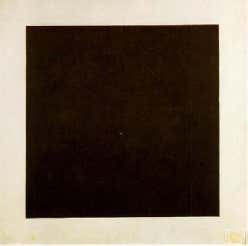
(1915) It represents, or presents, nothing but a black square on a white void, as removed from life as is possible. It is this void, shock, that met the public exposed to Black Square and was best articulated by Malevich when he stated, invoking an imaginary interlocutor, ‘Everything we loved is lost. We are in a desert…before us is nothing but a black square on a white background’, a background he called the ‘void’
(Formalism is a concept in art theory in which an artwork’s artistic value is determined solely by how it is made. Formalism evaluates works on a purely visual level, considering medium and compositional elements as opposed to any reference to realism, context, or content.)
Exercise 2.1. Form/Content
MORE SIMPLY PUT, CONTENT IS “WHAT” THE WORK IS ABOUT, FORM IS “HOW” THE WORK IS, AND CONTEXT IS “IN WHAT CIRCUMSTANCES” THE WORK IS (AND WAS).
palimpsest
/ˈpalɪm(p)sɛst/
noun
a manuscript or piece of writing material on which later writing has been superimposed on effaced earlier writing.
something reused or altered but still bearing visible traces of its earlier form. (Wikipedia)
Desicion making process for the work of Kentridge
I separate the work from the artist and focus on what the audience see and experience whilst in front of the work, viewing it. I will focus on the subject and object as art, without a value judgment. I am contemplating life being brought into art, this would include the experience of the viewer as well as the artist and put the work right into this experience, art as a praxis of everyday life. I also feel that after this whole exercise that I have in a way tried to defend what I think art per say. Is this what Sontag was alluding to – did I now create my mechanism to interpret Wiliam Kentridge’s `Procession Canvas-Diptych?
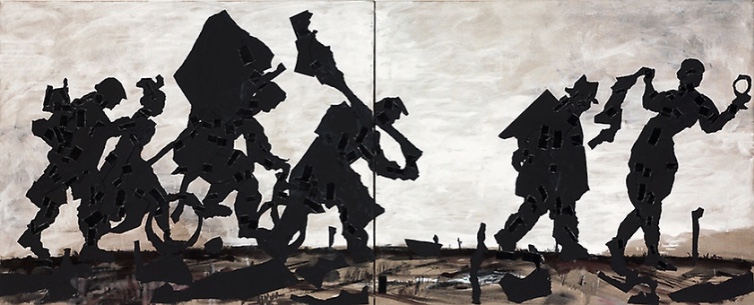
Description of what the viewer see
It is a wall hanging created by two equal sized canvases, size is 85.09 x 210.19 cm. It is a dark ( mostly black paint) painting of a scene of figures carrying burdens. The artist uses a flat horizontal space with cut out paper figures, and the way he constructed them, indicates that they are moving forward, in a kind of burdened procession. Constructed from by torn fragments of paper and then pasted together again. The figures are monochrome which yield great visual interest. The figure proportions show despair as they are bent forward and big on the landscape in terms of perspective use. It lets the viewer see into the future, as the figures move onto the next canvas. The figures also look like shadows on a wall. The 6 figures are made of paper collage, looks like the artist tore them into shapes with his hands, and then taped them into walking shapes, you see evidence of tape on the figures. All the figures are moving in one direction, 5 are walking and one is riding a bicycle…..going to work. The figures look as if in procession over a barren and disfigured landscape. The landscape reminds of and emptiness left by something….mining, colonialism, war, refugees, apartheid? The work is mostly black, white, umber paint brush marks form and dull background, onto which these figures are glued/attached onto the landscape, like they forced onto a landscape.
About above work, Procession
Procession is a repeated motif in Kentridge’s work, there is also a sculptural work Procession(2000) , which features 26 figures cast in bronze modelled on the shapes formed by shadows.
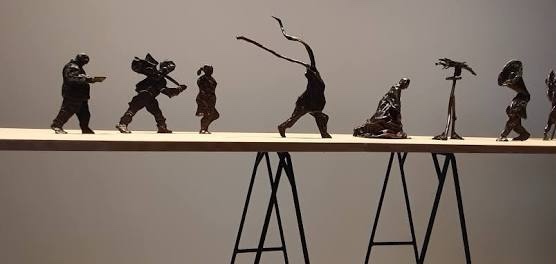
The theme of Shadow Procession is an ode to Plato’s allegory of the cave —prisoners of the dark cave. (https://www.films.com/ecTitleDetail.aspx?TitleID=30259). I am considering Sontag’s ideas on interpretation as “to interpret is to impoverish, to deplete the world — in order to set up a shadow world of ‘meanings”. What I now realise is that I am describing what the image is, my description is also a copy of an image (description) which can only be seen and experienced for what it is, when in front of it.
It is a personal story of a particular history: The characters are residents of Johannesburg ( city in SA) casting a shade of historical realism onto this ancient story which the artist appropriates. One can see his investigation of movement (form?) through space as he glued the figures onto his landscape painting. The artist created this in a relationship between thinking and making, where the studio is the constructive space to create meaning. His drawings becomes, like his films, slow motion… a version of thought. We cannot take in everything that happens around us, we think and operate within these fragments, so the artist is reminding us of how we think about our world, as well as how he thinks when working.
The basics of South African socio-political history and conditions must be known to fully grasp his work, as it questions as well as provokes the social consciousness. In this way the why and where the work comes from can almost not be separated from the work itself. Form alludes to the content and refers to repression and change. The series was recently shown as a short video installation at the Zeitz Mocca. ( Aug 2019, see video in blog) He continues to work with outmoded camera work to narrate his stories. One should consider that source and content is important, we have a nation in transition, hopeful but traumatized. One should also consider illusion in art.
After listening to part of the lectures he gave at Harvard (Norton Lectures) it is more clear that he uses words or phrases, “ where language hovers at the edge of meaning”. It can be seen as a push and pull where the viewer of art is nudged into contemplating the question of what it means to interpret art and the realities that inform it.
Reading/Viewing/Research list
- OCA website, Online Exhibiting 1: ‘A practice of possibility: exhibiting art in a mid-pandemic world. Online article Posted on 28/07/2011:45)
- William Kentridge interview: How we make sense of the world. https://youtu.be/G11wOmxoJ6U
- https://researchdirect.westernsydney.edu.au/islandora/object/uws:2500/datastream/PDF/view
- https://michaelrothberg.weebly.com/uploads/5/4/6/8/5468139/rothberg_kentridge_naratology_transitional_justice_.pdf
- Zeiz Mocca Gallery in Cape town
- South African artist website, William Kentridge
- “Six Drawing Lessons,” the Norton Lectures in Poetry at Harvard University, delivered separately over more than a month’s time.
- http://artnewengland.com/ed_picks/william-kentridge-calling-history-into-the-studio/
- Adjective online, article, Words and Urges: William Kentridge’s That which we do mot remember. A talk with artist William Kentridge by KM
Caroline Wright, Sawdust & Threads

Caroline Wright’s Sawdust & Threads was a residency, exhibition and public programme that took 22 de-accessioned museum objects as its material. The undoing was displayed in the gallery space of the gallery to allow the public to watch the artistic process unfold and to see the objects returned to their component parts. The drawings were exhibited alongside the performative acts of deconstruction. Each drawing was accessioned into the partner museum collections as a lasting record of their objects.
The project tried to pose questions around the nature of museum collections; about ownership of these objects and how is the value of an object defined? Is value being removed or re-ascribed during this process of deconstruction?
Decision making process for the work of Caroline Wright
- above drawing is part of works that present perspectives through a process of recording, reconfiguring and transforming,
- the work is informed by loss, value, mortality and the imperfection of memory.
- the artists working live and through physical making,
- her work is collaborative and interactive,
- she responds to attachment and personal histories.
- this process extends the value of unwanted objects by recording it in pencil sketches before being carefully disassembled by hand and displayed in their own disarray.
- It also reveal new or lost information about these objects, showing how objects can illuminate their own histories.
Questions which follow is about:
- where is the art?
- Is it in the drawings
- or in the action of undoing?
- by creating an art work, the innocuous box was transformed into something of value again, and as Caroline Wright was taking it apart we started to ask all sorts of questions about its materiality (whose handwriting is on the labels?
A publication to accompany the project Sawdust and Threads, was put together, which has the 22 drawings with images of de-accessioned museum objects in various states of deconstruction and with essays by Haidy Geismar, Rebecca Heald and Tanya Kovats. The project hopes to pose questions around the nature of museum collections. Who owns these objects and how is the value of an object defined? Is value being removed or re-ascribed during this process of deconstruction?
From a viewer’s point I would think it made the viewer think about the relationship with these objects as collections of cultural history and the archiving it. I started reading Wonder in Contemporary Artistic Approach and look forward to more learning in this regard.
Reading and research list
- Dettmers, Silke, (2007). On the Necessity of Wonder, pdf downloaded from https://research.uca.ac.uk /815/1/dettmers_complete.pdf. Accessed online on
- Cummings Neil, Lewandowska M, The value of things
- https://materialworldblog.com/2015/03/sawdust-and-threads/
- https://blogs.ucl.ac.uk/ethnography-collections/2015/03/16/sawdust-and-threads/
- https://www.carolinewright.studio/new-page-15
- Wonder in Contemporary Artistic Practice, Routledge Advances in Art and Visual Studies,Kindle version
Exercise 2.2. Changing approach
Think about the way in which you work in the studio – do you begin with form and then allow the subject of the work to emerge, or do you begin with an idea that you then try to show? Your process may not be as clearly defined as this and is likely to be more entangled, but on the whole, are you driven by material qualities, or ideas that are based in language? Choose an approach that is counter to your usual one. Spend three hours in the studio making an artwork in the medium of your choice. In your sketchbook describe the process and reflect on whether it has given you any insight into the way you work.

- I used an old unfinished work where I started off with depicting form of two rhinos walking,
- a monochrome drawing in charcoal on board, onto which I added some paint to create a dark landscape,
- consider changing and reworking,
- I decide to write down some ideas or content around this drawing and where I could push it.
- concern with poaching….the original idea was a how full moon evenings in nature are a big threat to these animals’ survival – in the dark it is difficult to protect them and it is easier for the poacher.
- I paint a rhino skull with chalk paint onto the drawing, am I still focussed on form to bring my ideas into the work? I like the monochrome tone of the work as it lends atmosphere.
- I think about the parallel project and consider using this existing project to continue.
- Ai Weiwei’s words is entering my thoughts: ‘…if anything, art is about our believe in humanity, without that, there simply is no art.”
- can I add writing and more charcoal?
- I would like to try my hand at making something more visceral – using clay, making cut outs.
- I can use my found objects of pottery shards and make a rhino image
- Ideas to engage with the viewer can be used in text, another layer of meaning will be translated onto the work
- I can visualise a space with paintings, drawings, real artefacts of bones and sculptures
- I can make a skull with material and wire, add bones (found in veld here on the farm)
- I will use the time to experiment with ideas of what I can create

I made some rhino cut outs from newspaper print as well as an old painting, I always thought could work as something else. I think I would like to explore collage – it is really intriguing that these forms, left the four sides of the painting/material/paper, behind. My words here are taken from Jerry Saltz on the friendship between Matisse and Picasso as described by F Gilot (Smithsonian video)
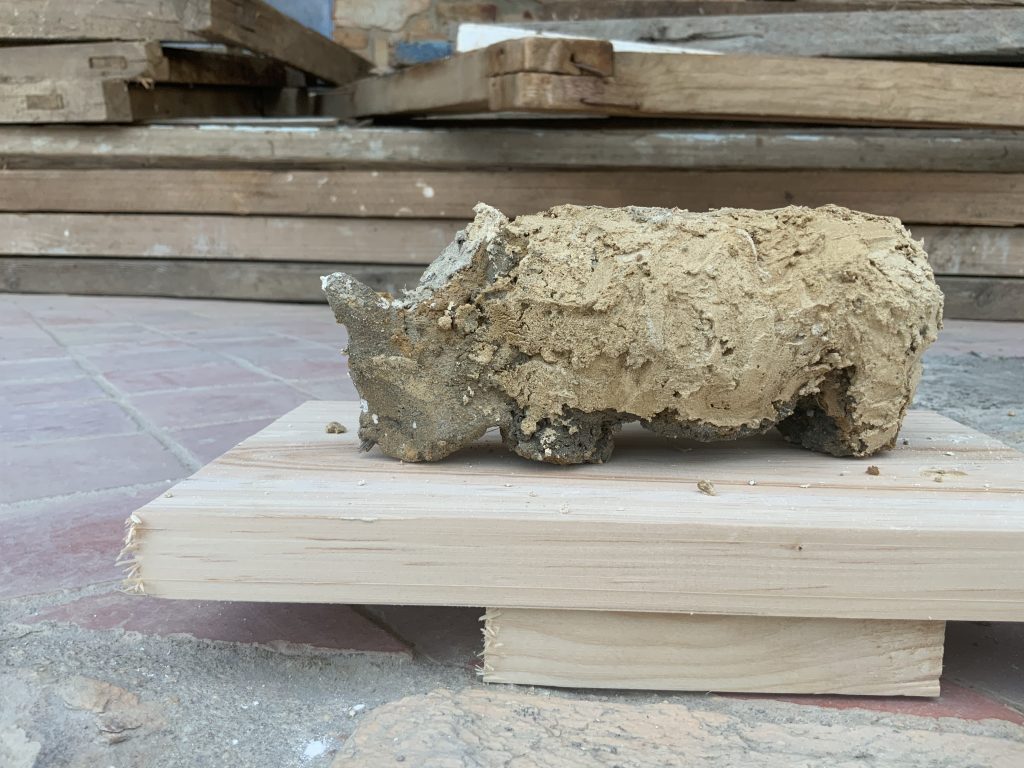
I decided to use of the cement the builders are working with whilst putting a cement screed on the floors of our farmhouse (busy renovating). I made a mixture of sand and cement, hoping to get the same consistency as clay and formed two rhinoceros bodies, one a flat copy of a cut out and the other a 3 dimensional attempt at sculpting. I did not follow a recipe which says how the products should be mixed or try to find ideas of the how of making a rhino on the internet. I used my own drawing as starting point to create a different object. I know it can break/flop and my hours spent on this exercise might end up being only the words describing what I was attempting to change in my work process – but that was the reason for doing it. It was nothing more!
During the making process my hands were also to busy (and dirty) to show the process -more, I was sitting on the floor where a group of labourers and skilled masonry work men were at work, and me being too embarrassed to make a photographic documentation of my work – they are masters and working hard….I was playing and having fun…..hopefully I was learning a lot!
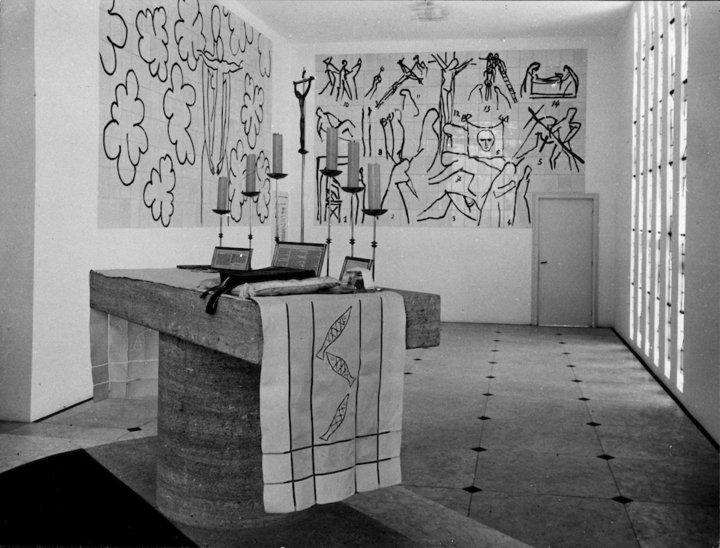
Reading and research list
Smithsonian American Art Museum:Jerry Saltz and Clarice Smith Distinguished Lecture series, online viewing on YouTube
Reflecting on Intellect and Social
‘Like the fumes of the automobile and of heavy industry which befoul the urban atmosphere, the effusion of interpretations of art today poisons our sensibilities. In a culture whose already classical dilemma is the hypertrophy of the intellect at the expense of energy and sensual capability, interpretation is the revenge of the intellect upon art. Even more. It is the revenge of the intellect upon the world. To interpret is to impoverish, to deplete the world – in order to set up a shadow world of “meanings.”…’ Sontag, 1994:7
From the study guide I found the following interpretation: “Sontag argues that the attempt to extract content from form and the privileging of content means that the sensory experience of art is impoverished. The qualities of medium, be they sculptural, spatial, or of surface become secondary. The way that two materials come into contact with each other, or the way that light is captured, for example, may have a powerful effect on you that might evoke sensations/associations. However, this mode of interpretation privileges what the work is trying to say over what it does. To understand the visual through this type of interpretation is like trying to find an equivalent or a translation rather than engaging with what is actually before you.”
Do we ever see without judging (innocent eye)? Do we see the work as the work….”the thing in itself” (Sontag, 1964) This thing could be the journey and not the arrival. I realise that this course is putting a lot of emphasis on the process (the journey) of making art. I consider Sontags ideas and my limited understanding of Deleuze, that consideration can or could be about actively engaging with art, and not merely to interpret it….that something where we move away from to the priority of language over an experience, ‘sayable over the seeable’ . We need to consider thought and how language opens up that experience of viewing art. I see the artwork as a mediator between the artist and the viewer. I also believe the viewer is allowed to bring in his/her own interpretation of an artwork, but I realize this is a complex experience as we also assign value to the work.
I went back to the essay of Silke Dettmers (2007 online pdf) where she writes that “words present themselves as the perfect tool to ease the unease in the face of images. Writing about artworks sanitises our encounter with art.” She is concerned with words having superiority over the image, as we have become so used to attach words to our experience and activities.
Exercise 2.3. What art does
Sontag reminds of the sensuous experience a work of art can offer. I agree that we became disconnected to feelings that art can bring and the value of those experience to more connected experience of life. I do not feel repulsed and uncomfortable by the intestines, I experience the work to be confrontational and forcing me, (by using a forceful and graphic image,) to react…..it captures my attention on many levels.
- The composition makes me think of a Vanitas still life and
- the work could be asking me for some investigation around the meaning of objects within the work
- even the light indicating something and not just lighting the subject matter) into the meaning that lies behind my own reaction, like linking it with art history and the Vanitas genre and or cultural ideas around body parts and use of animal for consumption as part of cultural/economic ideology and current fashion trends of the day.
- I am reminded that I am not always connected (as in awareness) to my internal organs…the inside and what we know.
- I will not say I know a lot about internal organs, recognisable for me, compared to my husband who is a medical doctor and scientist, he would see or understand more.
- I also presume my experience of the image would therefore be different than his, for that matter other viewers.
- The work brings into my world ideas about consumption of meat and by products, both for eating and the difference attached to that in cultures
- as well as use of the by-products like the skin for leather and other luxury usages.
- Intestines are the ‘offcuts’ or a ‘by product’ in my book, in some cultures it is a delicatessen, or carry spiritual meaning about masculinity, health and wealth.
- On the Tate website I found the following statement, which I do relate with Sontag’s statement above, ( I could view the rest of this body of work): “ The works confront us with the reality of the human body as physical matter. Our ideas and feelings are generated within our flesh, not from some detached and superior position in relation to it.”
- (Tate, https://www.tate.org.uk/art/artworks/chadwick-enfleshings-i-t06876)
- I am reminded of works by Damien Hirst. In the work below, the name of the work is very powerful, the work is progressive, controversial and shocking and can have many layers of interpretation. His work Mother and Child Divided , 1993, was created for exhibition at the 1993 Venice Biennale and was subsequently the focal point of the 1995 Turner Prize at Tate Britain the year that Hirst won the prize.

1991
2170 x 5420 x 1800 mm | 85.5 x 213.4 x 70.9 in
Glass, painted steel, silicone, monofilament, shark and formaldehyde solution
Image: Photographed by Prudence Cuming Associates © Damien Hirst and Science Ltd. All rights reserved, DACS 2012
It becomes clear that this artist explored with photography the physicality (of the body) through physical matter, and by positioning these states the viewer has a strong sensory and visceral experience. It is a powerful and almost harsh way to communicate her ideas, but it reminds of boundaries which exists in culture around function, form and fetish. Reading about the artist I understand her work to be innovative, unconventional and being able to capture a world in a state of flux. She was nominated for the Turner Prize in 1987 and her work is included in the Tate Collection as well as the collections of the Victoria & Albert Museum and the Museum of Modern Art, New York. I looked at Tate website to understand how the work was presented, which clearly contributed to its effect.
I learn from her work that she pulled the viewer into the work by using revulsion and seduction in such a sensuous way, which is part of the destabilizing powers the post modernist were concerned with. I read that her influence upon a young generation of British artists was cemented through her teaching posts at the Royal College of Art, Chelsea School of Art and the London Institute, where she embraced the sensuous aspects of the natural world, breaking taboos of the “normal” and “traditional” in art historical pedagogy. Recently I saw the work of a contemporary Spanish artist, Fernando Vicente, who combines anatomical images/illustrations, of males morphed onto feminine paintings. There is also the work of Michael Ready,Noah and Danny Quirk I find interesting on this topic which I find useful.
I am thinking about my project of drawings (blog is contemplatingrhino.com) that is my attempt to share my own concern with the rhino horn trade. I became sensitive to conflicting cultural and ethical perspectives on consumption of animal products, the value we place on animals…and how a black market was established which is now threatening the species existence.

Reductive versus descriptive
In the study material the author refer to the many passages as quotes from Sontag’s essay that was quotes and writes: “… as I have done frequently in this topic, rather than attempting to interpret them. There is something about Sontag’s distinct style that resists this treatment. Perhaps the sensory pleasure of her writing succeeds in dissuading the reader from subjecting it to the type of scrutiny that she rages against in relation to artwork.”
Sontag argues for a descriptive form of looking/critic. Accordingly we need a vocabulary which is not prescriptive and is responsive to the work being encountered and which will allow for whatever that might entail.
TS Eliot: The point of view which I am struggling to attack is perhaps related to the metaphysical theory of the substantial unite of the soul: for my meaning is, that the poet has, not a ‘personality’ to express, but a particular medium, which is only a medium and not a personality, in which impression and experiences combine in peculiar and unexpected ways.
Exercise 2.4. Rereading Barthes
Find two different interpretations of Barthes’ Death of the Author, that demonstrate Barthes’ argument. What do they bring to his text? Record your observations in your learning log.In the online Ceasefire Magazine I find an article written by Andy McLaverty-Robinson, who is a political theorist and activist based in the UK. I add an image that depicts the Death of the Author, which I found in this article. The other interpretation was found in a local online article of the Guardian, by Andrew Gallix, written in 2010, as well as follow up articles in the same newspaper.
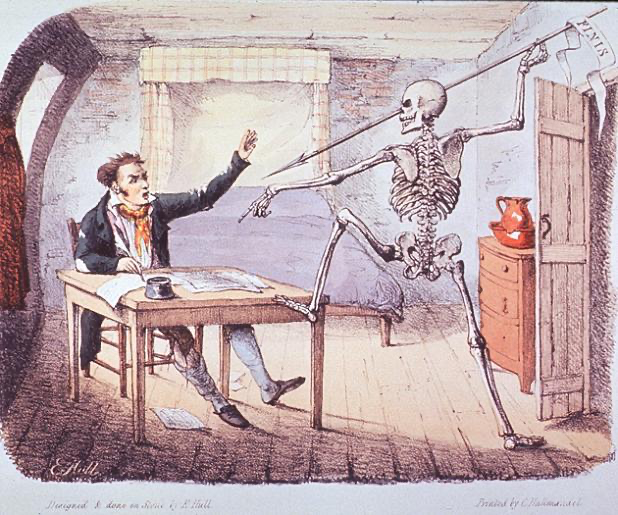
Arguments from McLaverty-Robinson
Barthes interpreted famous works of literature for the semiotic significance and use a structuralist style in these analysis. The death of the author is not directed at the idea of writing, but the image of the creative genius expressing an inner vision. Barthes oppose the view that the biography of the author has relevance to what they write….”no more relevance that do those of scientists”. He argues that writing destroys the voice of the author as well as the point of origin, due to the practice of signification, as language is the origin and the author merely crafted the text within particular codes/narratives or messages. He is arguing that there is no hidden referent which could create further meaning of the text. In doing this, one opens the work to different readings. The author burrowed from many sources, who could probably also not claim ownership in many cases, he cannot claim his full or sole ownership, ownership is within ourselves. A text will always have multiple meanings, as it was composed or constructed through multiple systems – the signs they use, both in their structure and in the text, as well as in their wider meanings. The reader is free to interpret the text and can recreate the text through his/her own connecting of meanings as they appear in these different contexts.
Barthes focus on the practice of writing, the craft. Here also looks at the structure of narrative and argues that there are 3 levels of narrative, namely, functions ( statements), actions and narrations that is used by authors or script writers. He also mentions a distinction between two types of texts, namely ‘writerly’, which can be written or rewritten today, and and is inseparable from the process of writing; ‘readerly’, in contrast, reduces a text to something serious, without pleasure, which can only be accepted or rejected.
Arguments from Andrew Gallix
Gallix has a books blog and in this article he revisited the mentioned essay by Roland Barthes. To him The Death of the Author has iconic nature as it symbolises the rise of theory. He explains that in 2002, the Pompidou Centre in Paris devoted a major exhibition to Roland Barthes which serves as a reminder of a time when a group of structuralists and post structuralists supersede the likes of Jean-Paul Sartre as France’s premier intellectual icons and ‘la nouvelle critique’ was flavour of the month. He refers to the phenomenon of secondary discourse which increasingly interposes itself between readers and works of fiction. So Barthes’s writing is an attack on the traditional biography based criticism in French academia in the sixties, when the key to a work of literature was sought in the private life of its author, and here Barthes argues that this undermined the authority in modern fiction. Like, as I have read in the case of Sontag, one do ponder the idea of the writer, in this case, Barthes, who find themselves within this ambiguous situation, want to be writers of a big novel, and being successful literary critics (writing best sellers on these topics) within a period of intellectual revolution. Gallix gives context to the continuing secularisation of the French society in which Barthes find himself – art and literature became substitute religions. Barthes seems to be taken with the gender-bending tale of mistaken identity in the starting point of his article, where he writes about the artist who falls in love with a young castrato he believes to be a woman. Gallix alludes to ambiguity of feelings as well as identity as he feels Barthes describe literature as a space “where all identity is lost, beginning with the very identity of the body that writes.” He writes that the death of the author marks the birth of literature, which is defined as ‘the invention of his voice, to which we cannot assign a specific origin”.
Gallix agrees that the modern writer or scriptor as Barthes calls him can only but mimic what has already been written. He sees works of fiction as palimpsests and devoid of any single meaning, like a message of God, and the key to a text is not to be found in its origin, but in its destination. Barthes does not deny the very existence of the writer. Etymologically, a text is a piece of cloth, one that in Barthes’s view is constantly in the process of being woven.
Exercise 2.5 Sontag/ Barthes
Compare the two essays by Sontag and Barthes. This is an opportunity to clarify your thoughts on both these essays and make links and comparisons between them. What do you think the two writers agree and disagree about?
The learning material suggests the following: Using the OCA student forums, find other students undertaking UVC2 to discuss the essays, focusing on what you think the two writers agree and disagree about. Your discussion can take place over time through a series of comments on the forum or a live face-to-face chat. Summarise the dialogue on your learning log. I arranged with fellow student, Stephan Schaffeld that we share our critique of each others views for this exercise.
I will publish it below.
Reply on fellow student’s blog (uvc.stefanvisualart.com)
My comments to Stephan, September 7, 2020 at 1:01 pm
A comment in the beginning paragraphs of your discussion intrigued me :”Is this not quite paradox as how could we understand what they want to tell us?” and later you write that you think understanding is more important than interpretation. I think that both these critics found themselves at the time of their writing of mentioned essays in an ambiguous situation where their discourse against interpretation and hidden meaning became bestsellers as theory to the literary world, hence I agree with your effort to first understand where they come from to arrive at their statements, thus to put them into context. ( did a lot of reading myself, and still not sure…)I read them both as urging the reader to connect with art as the thing itself, the form as in the work of art, the written story as words in the book, and not to rely the art critic to search for more meaning. Too much emphasis was placed on trying to retrace the author’s intentions and original meaning. The function of the text is to be read and valued, the author is irrelevant. Can it be so simple as that in the work of art as well, can we find meaningful art by simply looking at it?Both authors view that the seeing/reading of art/book (in the attention the viewer give to details of the work, by spending time looking at it), an opportunity arrises which brings meaning, which can be better than the (prescriptive) interpretation of the art critic in the newspaper or the gallery catalogue. This meaning will be different to all for reasons which we both agree, as it can be rewritten/deferred and will keep changing. In order to find meaning, will it ever bring us to understanding? Is understanding meaning ever possible? Does understanding equal interpretation, meaning= understanding + interpretation.In Afrikaans a word, begripshorison describes very well the idea of understanding our world from our own perspective (search for meaning?) (Wirkungsgeschichtliches Bewusstsein?) as well as a place into which we move when we meet that same “begripshorison” of the artist/author. As we come to the conclusion that we will never be able to understand everything, we almost know our/universal shortcomings, due to our own experience of our limited perspective(horizon?). So: I think this is it….that place of understanding, like a meeting place when one feels you ‘’get” a work of art and for that matter the artist. ( you talked about language and difficulty and getting a joke). Sontag argues in that way ‘the thing itself’ will be seen . I do appreciate the value placed on the work/text, (writing process described as crafting a narrative”)…. to be experienced. It opens/free wide multiple meanings to art as well as opportunity to be touched by, or have an encounter with art itself..here the senses come to play and we have interaction between the author/artist, the viewer/reader and the work/text.
Now going back to your statement, is this understanding or interpreting? Is the author not sending ‘warning signals’ to viewers/readers that we should be wary of trusting one truth and rather trust and challenge our intuition and own idea of what we think we can understand? I agree when you say : “ I would rather say: please, give us multiplicity of interpretations and intentions. But leave the ‘inexinexpressible’ (L.Wittgenstein, in: Âhlberg, 1991:26) , the free play of imagination, the space of unrestricted engagement to the beholder, the viewer, the reader. And the artist-self as the ‘creator’, the author would be the reader in the first place.
Sontag suggest interpretation should be descriptive in the sense that we rely on what we see, more than content. The fact that people prefer to read the brochures, or the wall note next to the artwork, could it have everything to do with understanding or interpretation. When we keep in mind how little time people spend in front of art works. I would argue that in a contemporary gallery the curator or even artist could be more readily available and will the experience of interpretation be more interactive and less prescriptive.
I do think it is important to spend time with the ideas on the author as being dead, as I feel Barthes and Sontag agree on the importance of the work and less the biographical or content. The moment we read the text, the author dies, as we are free to interpret this text in potentially many ways, as readers and the moment in time the reading happens also differ. So this “death” is that of losing control. It seams meaning comes from the reader himself, his/her personal experiences….and this means we could have potentially infinite numbers of meaning. In my research I came upon work done by TS Eliot, which seem close to the ideas of Barthes when it comes around the person/self/artist/writer/poet. In 1919 he publishes his manifesto as a poet and critic, “Tradition and the Individual Talent “. The essay appeared in the September and December, 1919, issues of The Egoist, the London-based magazine, and was proposed as a challenge to the conventions of early twentieth-century literary criticism.The role of the myth of a universal human nature and self is addressed by Barthes in his title . Elliot writes, “Poetry is not a turning loose of emotion, but an escape from emotion; it is not the expression of personality, but an escape from personality……..But, of course, only those who have personality and emotions know what it means to want to escape from these things.” , Elliot also writes of the poet having a medium (being catalytic agent of the writing/poem)), and not a “personality” if one keep in mind that a catalyst isn’t affected by the reaction, no trace of it appears in the new compound—but without it, the reaction does not take place. This explains, I think where Barthes’s Death of the Author was inspired(appropriated) from. Then another important idea from Barthes is the intertextuality, which takes nothing away from creativity, but acknowledges the knowledge that came before us, when states, the text is a “tissue of quotations . . . a multi-dimensional space in which a variety of writings, none of them original, blend and clash” . I think that space lies in the text….in the work of art. According to Barthes the writer is not the autonomous creator. In 1978, Roland Barthes published an essay named ‘The Death of the Author’. The ideas of Barthes’ text have sparked off a wide array of discussion. The notion of the death of the author has influenced the art world just as much as literary theory. ‘The Death of the Author’ is less bleak than it sounds. The notion suggests that the author does not control the meaning of their text. Instead, at the expense of the death of the author, we are experiencing the birth of the reader. What Barthes is trying to show us is that texts can exist in countless different times, places and contexts that the author may not have foreseen. In the text’s travels through history, cultures and time, the author’s original meanings are likely to be experienced differently. Put very simply, the death of the author explains that each reader experiences texts contextually and subjectively; therefore the author does not control the reader’s experience of the text.
Ps ( I understand very little German, just loved the words I used…..I do have genetic German roots, my maiden name being Kühn and had childhood German friends due to the neighbourhood I stayed in.I think it is necessary to have conversations about how we think about art and how we behave around art. As a last comment I think I should challenge myself much more in terms of who I think I am truly.
Stefan
September 10, 2020 at 9:42 am
Thanks greatly for your engaging and deep comment on my post and the ambiguous view on authorship and meaning. You mentioned that I placed understanding as more important than interpretation. What I wrote was ‘Understanding is more than interpretation’, i.e. (side comment on ‘i.e.’ = this intrinsically assuming that something can have a meaning). But I was thinking of was that one can understand ‘something’ without interpretation. If one assumes that interpretation is based on and through language. I can have a bodily, sensual, gestural understanding, a ‘felt sense’ without being able to verbalize it through language. Or words do not grasp my understanding fully.You are right when stating that context can be relevant for reception of texts.I believe that there is a difference between written texts and oral narratives, between writing and speaking, between reading and hearing. An aspect that Sontag pointed out in the interview with Berger. As Sontag critiqued her early essay (‘on interpretation’ is one her earliest one) and acknowledged that she saw or understood with some time passing, certain subjects differently. I assume, she would have written the same text quite differently.The same is true in my case and my learning path through this course and now at the end of it. I would write my post differently now. What does this ‘mean’? Context (space and time and development) has an impact. What happened in between the ‘then’ and the ‘now’? Perhaps, I got some ‘understanding’ that informs theses changes? Or what else would make the difference? Actually, it is also you, your commentary, your invitation to me to reflect on your and my words. An iteration, as my visual works are constant iterations, informed by my understanding (experience) and by collaborative interactions (shared experience). Or as Barthes described it as ‘tissue’ – what actually comes close to my art practice of ‘skin sculptures’ and skin as tissue. One difference occurring, and I am still struggling with, are art as work (e.g. painting, sculpture, installation, performance) that can be ‘understood’ or received as such and/or with additional textual information (e.g. title, artist statement and motivation, artist interview, exhibition text, curator’s text). At the end of this course dealing more with social, participatory and collaborative practices it raises question of intervention and dialogue, of authorship and art as object. If art as social practice is a temporal activity to gain knowledge and understanding, then it would possibly through a space of shared experience. There are no authors only participants in an aesthetic relationship.
Afrikaans feels so familiar to me, because so close to Dutch. I understand (ik begrijp) ‘meaning’ of words, without understanding of context or culture. Do I understand truly?
I do thank you for this opportunity!
Testing these ideas in the real world
I want to share a WhatsApp interview I had with a writer friend who published her debut book as recently as July 2019, ( the book has since been shortlisted and nominated for a book award for a best debut novel, which will take place on 19 September 2020.) The book is written in Afrikaans, a local South African language, developed by the Dutch settlers, and mostly spoken by white and colored communities. I asked her 3 questions and she left me voice message answers on WA. (It is in Afrikaans, so I will translate these questions and give a short summary of her answers on the questions:
What importance do you as a writer place on yourself and what your audience should know about you?
How important are your readers to you?
In your writing process, do you think the readers interpretation differed from your intent?
ANSWERS: This was a debut novel, so she was not known as a writer before this book. She feels strongly that the book is not about her, but would like that her integrity should be known by her readers. Her writing process aims to be truthful, historically, and culturally well researched. “Without readers, I do not exist as a writer, they are very important…my books need to be read. I must keep cognizance of the wide diversity of readers who read my book, stay honest in my writing, to meet me in that space where they find their own meaning, whether it is with new ideas or emotions they relate. I write about that which is my truth, I am not a messenger. I attempt to write with sincerity and truth. I had a wide/diverse reader reaction who felt identifiable with the lifestyle I was writing about..brought nostalgic memories to life, felt it brought self-worth to the characters.” Her interest in the culture and lifestyle of people and she felt she moved with her characters as they developed. She described the characters as that she followed them in her work/writing process… she talked about ‘ I helped them think, I gave them different scenarios….they became real…I became upset with them, felt like crying with them as things unfolded in their lives and the storyline. When we talk about her intent she answers: “I think I have a love for observation.”
REFLECTING
This conversation left me with the impression that the artist/writer can not afford to undervalue the reader/viewer/audience in the power to assign or/of finding meaning in art. I could also see how the writer used narrative to index a certain atmosphere – she talks about herself becoming upset with the characters…her writing characters into action within the narrative form she uses. The story carried…….Thinking about Barthes’s ideas that knowing more about the artist would not influence the meaning of the book in terms of interpreting the words and ideas she presented within her storyline, is not as easy. I do not think the author’s intention is to convince the audience that her story is real, she presents signs which can or do not stand for reality, it is for the reader to decide. The main characters in the narrative are farmworkers, from a different cultural group as the writer and they can be viewed as marginalized group from a social and economic perspective. Knowing that the writer is a White Afrikaans female can influence the reader and critique’s perspective on cultural appropriation and stereotyping. Barthes mentioned that the audience, author all know the story is fiction It could also be viewed as being critical/biased or taking a political, ideology, social and economic viewpoint. On the other hand, only Afrikaans readers can easily access the book as a hardcopy or Kindle e-book version. The book has not been translated from the original writing in Afrikaans. The author is not absent in the book, her love for and ideas about culture and lifestyle gave the story meaning.
Extra research on understand Barthes:
On a local literary website, Lidnet.co.za, I found an abstract using the insights of Roland Barthes – as described in his first work Le degré zéro de l’ecriture in 1953 /Writing degree zero(WDZ) 1967a) This work was also translated into Netherlands(close to Afrikaans language). The abstract alludes to certain attributes/quests found in “modern literature” and it is argued that these quests are essential for the activity of a modern literature to exist, and that they had caused a radical break with the historically preceding manifestations of literature. It argues that Afrikaans literature and literary criticism have become strongly infused by English tradition and assumptions, despite at times having shown close links to European literature; this was very notable in the literary revival period of the sixties in South Africa. Afrikaans literature has differed historically from South African English literature.
Following notes taken from this article:
- The significance of the term author is discussed as opposed to the term writer.
- Barthes uses author in WDZ in reference to the modern variety of writer.
- The etymology of the term author shows the connotation “autonomy”, which is central to the definition of the modern writer.
- It is precisely this autonomy which allows for the heightened significance of both individualism and the ethical quest of the author.
- a connection becomes noticeable, a prevalence of the ethical aspect in the shaping of the South African writer, like those in opposition to the 40-year rule of apartheid.
- Barthes ideas is used to understand conditions of unhampered freedom of thought and creation for the individual writer, aesthetically and ethically.
- There is a discussion on the difference between the French and SA Afrikaans culture at the times of the writing of Barthes with regards to realism in literature.
- SA was at that stage a British colony moving to become a autonomous republic governed by the Apartheids Afrikaans white government.
- One should not undervalue the role of the freedom discourse of this time but have to understand the power of hegemonic structures which should be transformed.
Summarising the ideas of Barthes and Sontag
Asking myself do I “get” it? I re read the articles and I will now summarise and compare Barthes’s ideas to that of Susan Sontag. I decided to revisit this part after I receive feedback from my fellow student on this course, Stefan Schaffield. I will add new ideas in a different colour.

After reading about the works of these writers I think it is important to say that they both have evolved over time, since these early essays. I came to discover that Barthes at a stage of his life sustained a practice of drawing and painting, to which he apparently referred to as a process of production, and not being caught in the trap of language. In an article the author states that ” the act of painting, it can be argued, is a practice (a repetition) Barthes undertook in response to what he saw as the crisis for language.” (TheoryCultureSociety.org)Within the Postmodern stance Barthes placed importance on the reader as he sees the reader as creating narratives, just like the artist. The ambiguous status of the postmodern author is questioned when Barthes discuss how this construct has come to outstrip its condition of freedom and paradoxically now face disintegration of its its autonomy. The function of the text is that it is(exists) to be read. I understand this, as that language/art speaks through an impersonality. One now have the unknown/ghostwriter in the same standing as the ‘famous’, on the same ground…..does it make a difference? The viewer/reader knows a writer/artist did the work. Barthes sees that the image of literature is too connected to the author as a person when the work is critiqued. I am aware that Foucault also challenged authorship, and understand that we should see ‘text’ as coming from many sources within our culture, which can only come together in the mind of the reader and that the author reworked already existing forms and ideas, which also shaped the author as well. It made me more aware how our ways of seeing becomes distorted on the one hand, if we attach cult status to a person and the possibility of loosing sight of the truth. I do think it is important and sensible to debunk and re-balance the value placed on the person – with regard to his reference to Van Gogh’s work being his madness, we know there was much more in his works (an letters) as to how other artist and his contemporaries, and his changing environment over time, influenced this style and use of colour. In this regard I do think that more recent exhibitions has done a great favour to the viewers of art by also showing the sanity behind…..it seems there is now more understanding that his metal illness actually kept him from painting, more of an impediment. I do believe there is something of a tyranny centred in the idea of the author in his person being central to the voice confiding in the reader. There should be some understanding of a impersonality in order for any work of art to reach a point where it is about the work, and not ‘me’/I……that removal opens up the work. Sontag call it a transcendental power.)Death of the Author is an attack on traditional literary criticism that focused too much on trying to retrace the author’s intentions and original meaning. (Sontag does the same with interpretation of art.) The essay became a discourse on the rules of author and reader as mediated by the text. Form in this context is characters using words and narrative which the reader actively reads. Barthes is against the myth of a universal human nature, influenced by Marxism and the capitalist idea of created/constructed the ‘person’ or self of the artist/author, he says that ‘author’ is a modern figure and linked to the prestige of the individual. He was also anti colonialism and supported the American Civil rights movement. Barthes talks about the modern writer as a scriptor and says: “The modern writer (scriptor) is born simultaneously with his text; he is in no way supplied with a being which precedes or transcends his writing” (Barthes 1967b:4). The text becomes the autority/autominity/ ,the still owns the freedom of doing it. Is it merely a change in emphasis?Barthes argues that the author has no sovereignty over his own words, as that belong to the reader who interprets them. When we read a book, we need not ask ourselves what the author intended in his words but ask ourselves what the words actually say: Text employ symbols which the reader can decipher. For Barthes the death of the “author” notion means that meaning is not something to be discovered… meaning is something which is spontaneously generated in the process of reading a text. (I like the active, it is not passive or as Sontag states deductive and prescriptive) Barthes does not intend to suggest that the death of the author lets the reader read all text any way he or she like; he suggested that reading always involves at least a little bit of writing or rewriting of the text’s meaning. He suggest readers adopt a more text oriented meaning when he places the writing of the author above the importance of the author.How to I make a link to art with regards to above notes? How do I defend it with words/discussion… I say art it is about creating/ working/doing life as I best possible can understand and translate it (can be figurative or abstact images/ideas). Shiff (2003) reminds his readers, in the chapter about originality, of Gaugin, who complained in a writing to his dealer that nobody wanted his work, because it was different to that of others, and then goes on….”strange, illogical public which demands the greatest possible originality from a painter and yet will not accept him unless he resembles all the others – [but] I do resemble those who resemble me, that is, those who imitate me.” The viewer of art search for signs of originality, when art is viewed, but the artist should understand this (my work as being original, my ‘creation) as also a communal entity and not private property. For me it links to The Death of the Author. In a way the work of Celmins, To fix the image in Memory, 1977-82 shows how an artist deals with the process of seeing and interpretation.
Sontag is not against interpretation in the broadest sense, she mainly argues against critics who took the transcendental power of art for granted by constructing their intellectual readings. She writes about interpretation being “summoned as a form of reconcilement between the ancient text to modern demands”,furthermore, she laments, that by the time of her writing, it is even more complex. She sees the task of interpretation the same as translation, and argues it has become ‘open aggressiveness, an overt contempt for appearances. She refers to Freud:”becomes occasions for interpretation.” Interpretation itself must be evaluated she writes, ‘but within a historical view of human consciousness”. She sees the value that it helps to “revise and escaping the dead past, where as in other cultural contexts is could be seen as cowardly.” I do think she agrees with Barthes and the ideas of structuralist criticism in that the interpreter/reader/viewer alters the text. She is more concerned with the critic who in her words “diminishes the value of the work”: she underlined that the modern style of interpretation (criticism) lost sensitivity due to intent to excavate or destroy a piece of art.” According to Sontag “interpretation makes art manageable, comfortable”; and by “reducing the work of art to its content and then interpreting that, one tames the work of art.” It made me think of words I read somewhere……..could it be that art puts us in front of an unbearable question, which we consider to reject as it affirms things we dare not say we have seen ( society could incur madness upon us?). She suggest that the critic should pay more attention to “form in art” (to the appearance of a work of art), and to “experiencing the luminousness of the thing in itself”. She laments almost when she writes ..”our task is not to find the maximum amount of content in a work of art… Our task is to cut back content ( rules of out thinking, theory?) so that we (again the critic) can interact with creativity, that which is art and indicates to the artist as a creative. Here I think she acknowledges the creative work process of the artists. I viewed a video made by MIT during a panel discussion on Images and Meaning. Sontag is part of the panel and her views on how we attach meaning through viewing images gave insight into her later ideas about visual information and how we communicate about it. She says that to look at images as representative is shallow, they are aids and trigger responses, has to be seen within a context to really understand them. We remember through images, but we understand through words. She is questioning the short circuiting of the laborious process, conducting words and argument how much we understand outside of context, a form of pleasure, information. Imagemaking can be instructive/useful……. a short hand, visual soundbite……can have associations if we can. remember/relate/identify
Reading and Research list
- Barthes Roland The Death of the Author Onlne access through UbuWeb, translated by Richard Howard
- Gallix, Andrew, 2010 In theory: The Death of the Author, online published in The Guardian.com on Wed 13 January 15.36 GMT
- Manghani,Sunil,2020 Neutral Life/Late Barthes Theory Culture & Society (Vol.27, No.4) Published online on June 25, 2020
- McLaverty-Robindson, Andy, 2011, An A to Z of Theory Roland Barthes: Death of the Author, Ceasefire Magazine, Posted on Friday 14 October 2011 14:00
- Schiff, Richard, 2003, Originality in Critical Terms for Art History, SecondEdition, KindleVersion
- Sontag,Susan (1964) Against Interpretation
REFLECTING ON THIS PART
This was a great opportunity to reflect theoretically the question , WHAT IS ART? I am thinking about meaning as significance/value, which will be different for everyone, the artist as well as the viewer in trying to understand intent or meaning behind a work. Sontag’s words in the beginning of the essay still sits with me – I can either long for the “earlier in time” when art was a magical experience; or now try to make art which the viewer will find as having significance/meaning/value. A social media comment, which I find apt for this discussion is placed here: “..no matter how you describe the Mona Lisa, your words will only be a vague shadow of what you have experienced”.
It also leaves me with questions about words we use to describe meaning and art:
- Words has the power to make paintings mean many different things
- And, words can make paintings look and perceived different
- Too much of the literature about art is often so obscure that it is hard and at times confusing to know what I am supposed to think or even see.
- Words can point to things you should look out for, like suggest questions to about if and how the artwork is trying to communicate something to you or about the artist.
- A painting can appear to change before our eyes as we try to visualize the descriptions of what the ‘interpreter’ /wall note/critic tell us is there to be seen.
- Do we ever allow for things to be just what it is? If we encourage analysis merely as excess of digging, what is significant becomes simply what is underneath?
- Do artist accept that they do not own the meaning of their work?
- Many artists do not reflect reality, but rather give expression to their inner world and feelings: how should the viewer understand that by merely looking/seeing/viewing at a work of art.
- How do one take this idea of Barthes, language is everything in literature to the art world?
- How to I make a link to art?
- How do I defend it with words/discussion… I say art it is about creating/ working with a (chosen) visual form of description …or visual language is everything in art?
- Dettmers (2007) wrote in her essay that she thinks artists fear the consequences of words….”like the reflection on the glass of the display cabinets – obscure the view of the object itself. Locked up and anaesthetised,….”
- Could interpretation be locked by academia and or theory….?
- But then, art is about thinking
Links and comparisons of their ideas
- Both these writers impacted on the culture they examined, which became a way of theorising the plasticity of cultural codes.
- Authorship is in the work done (effort, skill, construct, using devices, narration)- an impersonality of the writer
- Sontag is taking a position on how we assign meaning to, or understand art and literature, and warns that critics are ‘overplaying’ this role by lowering the value the experience can have.
- Both find content in the work – writing (Barthes) style (Sontag refers to realism as a generic construct)
- Both see the importance of the viewer/reader as interpreting the work
TOPIC THREE.
Marcel Duchamp, a pioneering artist and leading figure in the Dada movement, argued that both the artist and the viewer are necessary for the completion of a work of art. He posited that the creation of art begins with the artist—often working in isolation in the studio—and is not completed until it is placed out in the world and viewed by others. “All in all, the creative act is not performed by the artist alone; the spectator brings the work in contact with the external world by deciphering and interpreting its inner qualifications and thus adds his contribution to the creative act,” he once wrote. ( Moma website, Moma learning https://www.moma.org/learn/moma_learning/themes/media-and-performance-art/participation-and-audience-involvement/)
Artists engage and collaborate with audiences in many different ways today. By opening up their process of creation to others, they give up a measure of control over their work, and give over to chance and to trust in the viewer-turned-participant. And the work of art, in turn, becomes a two-way exchange.
Intention, expectation, realisation
Exercise 2.6. Unravelling
Choose an artwork that you have produced during the course. in your sketchbook map the intentions, decisions, expectations you had for the work, how they changed during making it, think about the types of decisions you made – were they formal, practical, material-led, emotional, intuitive or do they inhabit other categories? Do you think you realised the work in the way that you intended? Is it possible to fully know your intentions?
Making the rhino cut-outs for collaging experiment. I have newspaper and magazines, as well as the pottery shards. I want to experiment with cut outs, put think photo montage could work better. I do not have a printer, so I work with what I have. I feel there is an expression to be made with regards to the plight of rhino population being threatened due to the usage of their horns – they are killed by poachers who work for powerful organised crime syndicates. I felt stuck by my materials.
I wanted to develop a different form of working with ideas about conservation and link it to collage making. I intuitively used the body shape to see what I can make with it. I want to create a space that “removes” the rhino from its natural space….leave the viewer with understanding of the effect of poaching.

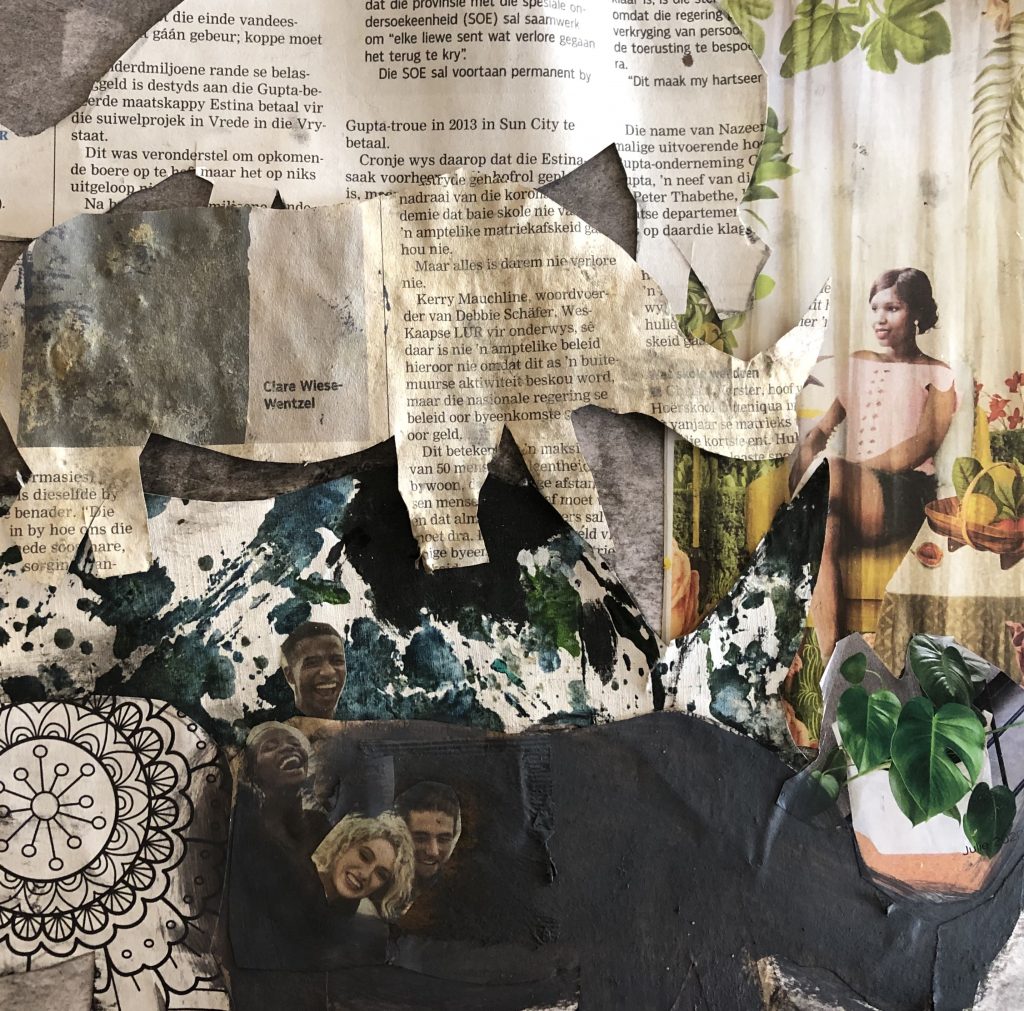
I decided to see if I could cut out a rhino from a piece of paper that shows a natural space…continue from there. I think if I could put figures of people or just consumables on the other side of the collage.

During this process I believe my thinking became influenced by fear of failing and lack of direction. I have never tried collage. I do see the possibilities of taking this work to something I have in mind, but it changed with the material I had. I am reminded of the print I made, which was a appropriation of the painting of Pietro Longhi, with my idea of removing the rhino out of that scene as well. Longhi’s genre pictures is about his life in Venice and provide some documentation of contemporary Venetian life and events. I know this rhino travelled the world -as something the be seen/spectacle/of wonder. I am not sure that I will ever understand my real intentions, as I discover the layers of memories and associations that happen when one go in a direction with intention of creating.
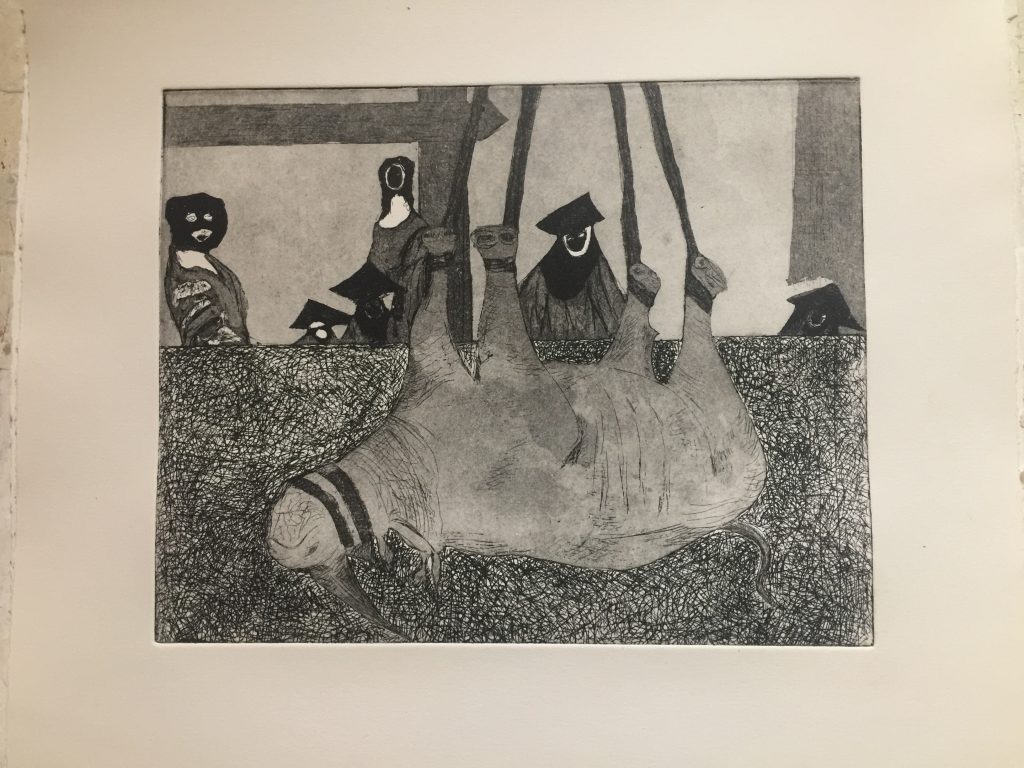
ambiguity and vagueness – I do like the following in our study material:
It is also possible to go in the other direction and have no clear intention for the work. According to artist and teacher Graham Crowley there is a distinction between ‘ambiguity and vaguery’ (Crowley, 2009:129). Many artists deliberately avoid the possibility of fixing meaning in an explicit way, but at the same time maintain a specific identity for the work. The desire for the work to be open to different possible meanings is not the same as not knowing what you want for it. On the other hand, to not have thought about particular aspects of the work, or not to know whether something works in the way that you want it to, would constitute vagueness.
I do not know Graham Crowley and enjoyed reading about and looking at his work. I admire his style and use of colour. His opinion about figurative and abstract painting is stimulating, to him there is just a whole spectrum of painting, which represents a mental process, instead of a cultural form of definition. Youtube videos in conversation between him and Robert Dunt was good learning.
‘“Getting it right” or “finding it” is dependent upon a loss of control. I don’t want to be in control in those evolutionary beginnings to make something – I want to catch up with it – or catch it.’
Wilding, 2004:82
I take with me the idea to start without a clear intention and to work in a way that their is an identity for the workout not an explicit meaning -it still keep meaning open for the viewer.
Exercise 2.7 Interpretations
Below is a list of as many different possible interpretations I could think of for Andy Warhol’s Electric Chair:
- execution style death sentence by Court of Law
- why empty chair
- Haunted chair
- a reminder of an image of torture I have seen in movies and read in articles about.
- punishment by State/Society/Rulers
- Appeal or protest against death punishment
- Liberal or conservative view on life and punishment
- Spectacle of killing
- Who does the killing, who watches the killing
The fact that I know there are more ‘colours’ /copies made by Warhol of this work made me research the work some more.
On the Christies’ Website I read: “It is no coincidence that in 1964-65 when Warhol painted this work — which comes from The Collection of S.I. Newhouse — the issue of capital punishment had come to the fore once again. Protest against the death penalty was at an all-time high. In New York, the electric chair in Sing Sing was used for the final times in March and August of 1963, before being finally outlawed two years later.’
Looking at the study guide: As you explored in part one, there is a balance to be struck between harnessing uncertainty during the creative process and at some time reaching for something not necessarily, certain, but close to what you want. It might not be easy to verbally articulate why something ‘feels right’, yet it will probably be the result of a process that comes from experience. This ability might be referred to as intuition, which can be derided as less valid than other types of ‘logical’ decision making processes, but intuition is not arbitrary or ungrounded but based in praxis. This involves following a path of inquiry, (some of which may be evident in the work) and having some awareness of what this is and how it could be perceived. This could be one of the differences between art and something that might look like art.
Reading point 3
I found videos, sound recordings and photographic material on the Moma.org website about the work of the artist, Carolee Schneemann and made some notes.
- being a female and not considered to become an artists was a struggle for her in the early 50’s.
- she was a ground breaking performance artist working mostly with her body and her physical experience in making her ‘happenings’/performances from early on in her career.
- How we use words linked to performance in language reflects on how we view and value art – art as entertainment could become the same as a show, being performative, not sure if this could be confusing?
- she investigated subjectivity, cultural biases in art history and the social construction of the female body
- her Kinetic Paintings started in the early 50’s, in these works she used her own body and performed roles of the ‘image’ as well as the ‘image maker.
- Her work Meat Joy as a video of the performance was removed from Youtube for violating their policy on nudity or sexual content. I followed a link from MOMA which said “view Meat Joy (1964) on YouTube and could not view it.(art critique???control??)
- I have seen photo images of the and can imagine the reaction her work must have had in the time of its production.
- I thought of the work I of Helen Chadwick, MeatAbstract in relation to Sontag’s statement ,‘Real art has the capacity to make us nervous. By reducing the work of art to its content and then interpreting that, one tames the work of art. Interpretation makes art manageable, comfortable.’ Sontag, 1994:8.
- Then again going a bit further in time, Lady Gaga wore a meat dress where she makes political statement, part of her ongoing use of dress/fashion (she wore it to the 2010 MTV Video Music Awards)
- Schneemann invented something in her performance of Meat Joy and it nearly cost her life in one of her shows in Paris where a audience member dragged her off the stage and tried to strangle her.
- most of her work was inspired by improvisation and not hiding from taboos linked to sexuality, gender and erotism.
- she developed her work into film and film making – one sees this continuous development with the subject of her work.
- Could one say that it was easy to distort Carolee Schneemann’s intent?
The following was written by art critic, Richard Kiln, after her death in May 2019.
-
“So much of her work was prophetic, in terms of gender issues, female sexuality, power imbalances, the brutality of the American political structure (“deformed hyper-masculinity”). Viet-Flakes, her film that focused on American brutality in Vietnam, was undertaken in 1965, at the very dawn of the antiwar movement. That is extraordinary. Being prophetic, though, is a decidedly mixed blessing.
Her emergence as an art student in the 1960s coincided with the zeitgeist of protest and social change, undergirded by the “huge surround” of racial injustice. “de Beauvoir was a huge influence. And then reading Wilhelm Reich. And then all the radical, forbidden literature that was beginning to emerge around the Vietnam War—which we don’t have anymore; alternative journals, critics…” Her understanding of kinetic theater was that it was “an extension of Abstract Expressionism. It relates to painters going into real time and actual space, preceded by Oldenburg and Robert Whitman and Jim Dine and Red Grooms; those were the influences ahead of me, confirmed and solidified by Pollock.” For Schneemann, it was “extending the physicality into my own body of the painting. Kinetic theater is this intensification of visual dynamics…..“And in the way aesthetics can influence or bewilder or provoke.” And there was no greater example of this than the legacy of Carolee Schneemann. She no doubt bewildered. She certainly provoked. And—to say the least—she influenced.”
I read an article about the artist/sculpturer P Barlow which touches on her work process, which in this case was a permanent sculpture, Quarry, in the Jupiter Artland a sculpture park, near Edinburg, Scotland. I spend the time to write about this artist, as her thoughts on understanding/meaning will be discussed in the assignment for this part.
- I find her relation to how woods make her feel, when she walks through them, and how she attempted her work to ‘enable’ the audience to have that same experience, of great insight into how she thinks about meaning of her work.
- I would like to call it awe – she talked about ‘constantly looking up’ (The Scotsman, 28May 2018)
- She used hardboard, cement and polystyrene for the making, which in this case needed planning to take in account structural engineering and use of specialist fabricators – these ‘trees’ are between 10 and 12m in height.
- The two column like trees are accompanied by a third work, a stone staircase which looks like a fragment of a much older ruin. About the materiality of the stone staircase sculpture, which in a way she sees as ‘fake’, looks old, but it is not, she allied to sculpture as being a ‘deceitful art form.
- She shares her concern for ruins and that it was always part of her interests:“I want to ask myself, what is it about being alive now?
- The idea that the thing is not from the past, but is a kind of phantom of an object,
- an emotional response to a world in turmoil.”
“I kept thinking about what I had done in the woods when I first went through them, which was constantly to look up. That was a key to what I wanted to bring to these woods, hopefully to enable an audience to look up in the way that I had.”
“The way the works come about is often extremely expedient, but to me they are dealing very much with being alive now. There’s an issue of: is the space controlling the work or the work controlling the space? The way the sculpture takes on different contexts is a metaphorical or symbolic way of relating to systems of authority. Where are the controls in our society?”
In an article in The Financial Times I read that she thinks the role of the artist is to do with manifesting the conflicting times you live in. She has no doubt that art can be a form of resistance. “Making art is a political act. I’ve always believed that. It wrestles with beauty, fear, emotion. It doesn’t have a verbal language attached so it becomes a game. It’s feral in its existence. And we have to fathom it.”
That exchange between artist and viewer is quintessentially human, democratic and beyond the control of those that govern us. “It’s a kind of uncontained politics,” Barlow muses. “It’s the idea of edgelessness. It’s quite scary.”
Then on Courtauld: “I’ve become more and more interested in the breakdown of logic and the breakdown of meaning. Almost like an archeologist finding a fragment, or a something, and not knowing quite how it fits into anything. Does that mean that fragment or that thing just gets chucked because it can’t be identified? Is it problematic to be in the realm of meaninglessness, and what is meaningless anyway? You know those handprints in caves where the coloured dye has been blown around them, where the hand itself is a stencil? It’s the most extraordinarily phenomenological evidence of existence, but I don’t know what the meaning is. It’s absolutely compelling to see that image, and action, that is thirty thousand years old. Somehow I feel that the act of making could be as close to that as possible, whatever that was. I supposed that would be an aspiration of mine, so that the meaning is not explainable, it is liberated from that, but is more akin to evidence – evidence of a time, and an action, and a mental and physical process.
BIBLIOGRAPHY
Art Critical.com, article by Wilhelm Reich, Transformer: Carolee Schneemann in conversation with Richard Klin, published online, Saturday, May 18th, 2019
Leung, G. (2008) ‘Undecidability as Resistance: The Potential Space of Suspension. Notes on Art Sheffield 08’ In: Afterall.org 15/08.08 [online] At: https://www.afterall.org/online/undecidability.as.resistance.the.potential.space.of.suspension. notes.on.art.sheffield.08#.WzZLeIV2At0 (Accessed on 8 September 2020)
